One day in Havana is never going to be enough to capture the magic, culture and energy of the capital of Cuba, but with 24-hours see Havana’s highlights from its cigars to classic cars.
Romanticized by the images of old cars, forgotten villages and a simpler way of life, Havana Cuba had long been on our bucket list, and it became all too reachable when the Obama administration, ended the sanctions in recent years. Since visiting, those have been rescinded, and although Americans can visit, they have to be eligible for one of 12 visa categories. Up until then, cruise ships offered the most painless access, with tours designed to meet the visa requirements.
Although some of the specific information and related cruise moments are now outdated, you will still find a wealth of information and inspiration if you’re visiting Havana from outside the USA or flying in from America with a legitimate reason to visit.
- One day in Havana is never going to be enough to capture the magic, culture and energy of the capital of Cuba, but with 24-hours see Havana's highlights from its cigars to classic cars.
- Rise and Shine
- Disembarking
- But first, currency
- Then cigars!
- Plaza de San Francisco de Asís
- Basilica de San Francisco de Asís
- Plaza de Armas
- Em Templete monument
- Hotel Santa Isabel, Havana
- Castillo de la Real Fuerza
- Catedral de San Cristóbal
- Salon Rojo
- Plaza de la Revolucion
- Let’s Ride!
- El Floridita
- Gran Hotel Manzana Kapinski, Parque Central, Havana
- The Tropicana Cabaret Nightclub, Havana
- It's a wrap

Rise and Shine
We start our day awaking to find that we have already anchored in Havana. Like kids on Christmas morning, we head up to the deck to get the first view. The passengers are all buzzing with anticipation and the excitement of seeing this historic port city that until the 1950s, was a place Americans came to play – particularly during the Prohibition. In the 1920s and 1930s, it attracted families as much as Chicago gangsters, bootleggers and those seeking to satiate their desire for vices of rum and casino gambling.
From the top deck, an incredible sight greets us. It’s just like the photos we used to see in old National Geographic issues as kids. The docks are run down; the buildings yellowed and deteriorating. There are horses and carts, colorful classic cars, and run-down houses. In the distance, the nation’s capitol building stands two feet taller than its American versions, an obvious FU from its architects and politicians.

Rising out of the brilliant blue waters of the deep harbor, lush green hills loom steeply above fishing villages and favela-like clusters of housing leading up to a dramatic white statue of Jesus Christ the Redeemer. Further along the bay, a Cuban navy frigate is anchored, its granddaddy would have been a significant threat back in the days of the Cuban Missile Crisis.

In the distance, guarding the entrance to Havana stands the Castillo de Los Tres Santos Reyes Magnos del Morro. Built between 1589 and 1630, the fortress was made to stop an invasion by pirates and other nations. For all its thick defensive curtain walls, it did nothing to withstand a mighty force of 4,000 British soldiers who attacked from the land side, rather than the sea. Today it’s a museum and a lighthouse.

Disembarking
As the main attraction at the time (the US cruise ships have since stopped servicing Havana), everyone is eager to step foot on this partially forgotten and mainly taboo territory. Each passenger has had to purchase a $75 visa from Royal Caribbean and sign up for an appropriate tour that fits the 12 reasons for visitation. A customs and border protection office offers three small interview rooms where you have to hand over your passport and have your photo taken. With the ink still drying on the visa, we push our bags through a scanner and walk through a metal detector. We’re in!
But first, currency
Cuba has a strange system for separating its cash from the locals and the tourists. There are two accepted forms of currency – the CUCS (Cuban Convertible Peso), and the CUPS (Cuban Peso). The CUCS is denoted by its imagery of building on each bill, while the Cuban Peso, the currency used by locals features figures from Cuban history on each denomination. You buy the CUCs for pretty much a 1:1 conversion, but the 13% exchange tax will sting a little. For citizens, the CUPS is the national currency. It can be used to buy all standard groceries and day to day items, but as visitors, you are not given the option to exchange.
Then cigars!
With wallets and purses loaded with filthy lucre, we head straight to the cigar shop, unsure as to whether it will be open later in the day. We select four very primo, hand-rolled cigars and negotiate the wooden case to store them in – we’ve always wanted one.

With only minimal time on the ground, and one day in Havana do it all, we have carefully considered the best way to see as much as we can, while learning about Cuban life and culture. Due to the sensitivities around traveling to Cuba as an American subject, we stick to one of the officially mandated tours. As much as we’d like to continue our usual freewheeling travel style, we opt to join an approved tour offered by Royal Caribbean—The Old Havana Cultural Walking Tour. This tour, which meets the prerequisites for people-to-people educational experiences gives us our opportunity to get to experience Old Havana – something we’ve always wanted to see.
Meeting our guide just outside of immigration, we get straight to it.


Plaza de San Francisco de Asís
Stepping out of the cruise terminal and crossing the street to enter Old Havana formally, we have a bit of a “deer-in-headlights” moment. It’s been years of planning and dreaming to get to this point, and it’s surreal finally setting foot on Cuban soil. Crossing the street from the Terminal Sierra Maestra, we head to the iconic Plaza de San Francisco de Asís. This open square with its grand fountain has greeted new arrivals to Havana since the days of Spanish galleons and conquistadors.


Three women in traditional dress are eating their lunch in the shadows of the Basilica de San Francisco de Asís and the adjoining Convento de San Francisco de Asís. When approached for a photo they shoo us away, but moments later they’re surrounding us like strippers wanting a picture with them for cash. At the same time, a young man is scurrying beside us, pen and pad in hand, hurriedly scrawling. It takes a moment to realize he’s trying to sketch a caricature on the fly of Bernie. It looks more like a Dick Tracey cartoon, and we ignore and deflect, hurriedly catching up with the group.
The number of stories we hear of fellow passengers being scammed is surprising. It’s the naive ones who have fallen for being asked for money, which becomes a request for baby food that ends up with the reluctant traveler being led to a supermarket and told by the woman that she is buying her a whole carton of baby food. Another couple was swarmed by kids asking for money. It’s easy to be caught off guard in a new place where English isn’t as common, so be wary and conscious of the fact that the locals are just as good at scams as in any major European capital.

Basilica de San Francisco de Asís
The Basilica is a beautiful 16th-century Catholic church and monastery towering over the docks, greeting visitors of all faiths and welcoming them with open arms. The square itself is a central gathering place for locals, and it’s a hotbed of action with tourists and panhandlers alike. But, today, we notice something different—many locals also crowd the square. Happy families are walking by, singing, cheering.
It soon becomes apparent that we’ve serendipitously arrived on their most important day of the year, the 499th anniversary of the founding of Havana—and a public holiday for some. This underlying energy and enthusiasm immediately changes our mindset for this tour – it looks like we’re all here for a good time.

A pathway leads past the Basilica through Jardín Madre Teresa de Calucuta, the Mother Theresa Gardens to the gates of the convent and beyond to the neighboring Greek Orthodox church, Sacra Catedral Ortodoxa Griega San Nicolás de Mira. St. Nicholas’ Cathedral is possibly the smallest, but one of the most ornate cathedrals we’ve ever entered. It’s gloriously embellished with Byzantine-style mosaics and artwork, including one of the bishop and Fidel Castro, representing that the church is a gift from the Cuban people.
In the garden, it’s a mix of state graves, modern sculptures and rusting cannonballs that look like they have seen active service from the heavy denting on their exterior. A family of kittens watches on casually, the first of many stray animals that walk Havana’s streets.

We follow our guide along Mercaderos Street past “The Conversation Sculpture” and to a fountain, said to bring travelers luck. Unlike the Blarney stone, you don’t need to kiss this rock, just a slight touch and you’re set. Yes, it’s cheesy, but who are we to miss a tradition.

The street leads you along to the Palacio de los Capitanes Generales where the pavers have been replaced with wood. It is rumored that in the past, the lady of the palace had them replaced to muffle the noise of footsteps and horse hooves on the cobbled streets below her window. This palace sits opposite the famous Plaza de Armas where, today, locals spill out of the park playing traditional music, dancing, singing, and cheering. It’s a street photographer’s dream.



Plaza de Armas
In the center of the Plaza, an old steam train stands as a not-too-subtle homage of the country’s workers in the sugar industry. The socialist roots are a common theme seen with portraits of Fidel Castro visible in local parks and on signage across Havana. Like many Caribbean cities, the Plaza de Armas is the center of town. Today it’s crowded with Cubans queuing to get into the grounds of the city’s most famous landmark, El Templete.


Em Templete monument
El Templete (The Temple) is a Grecian-style temple that plays a vital role in Havana’s story. Within its small forecourt stands a Ceiba tree, said to be planted in the exact spot where on November 16, 1519, the Villa de San Cristobal was founded. A line snakes back out of the gate, around the corner and up the side of the War Museum. We learn that if you walk around the three times and kiss it, you are likely to good wishes and prosperity. While time won’t permit us to queue, we can explore the nearby museum grounds, while watching a parade of school children in what look like scout uniforms marching through the Plaza.

Hotel Santa Isabel, Havana
Our first real taste of Havana comes in the form of a mojito in the courtyard bar of the historic Hotel Santa Isabel. This old gem, set right on the Plaza de Armas, is one of Havana’s most prestigious hotels, hosting US presidents including Jimmy Carter and Hollywood stars like Jack Nicholson. It was initially the colonial mansion where Santovenia Counts lived before being converted into a boutique hotel in 1867. Today it’s regarded as a five-star hotel (in Cuban terms), with actual internet access and Wi-Fi cards available for purchase. We’re escorted out into the leafy courtyard, a fitting setting that offers momentary respite from the Havanan humidity.

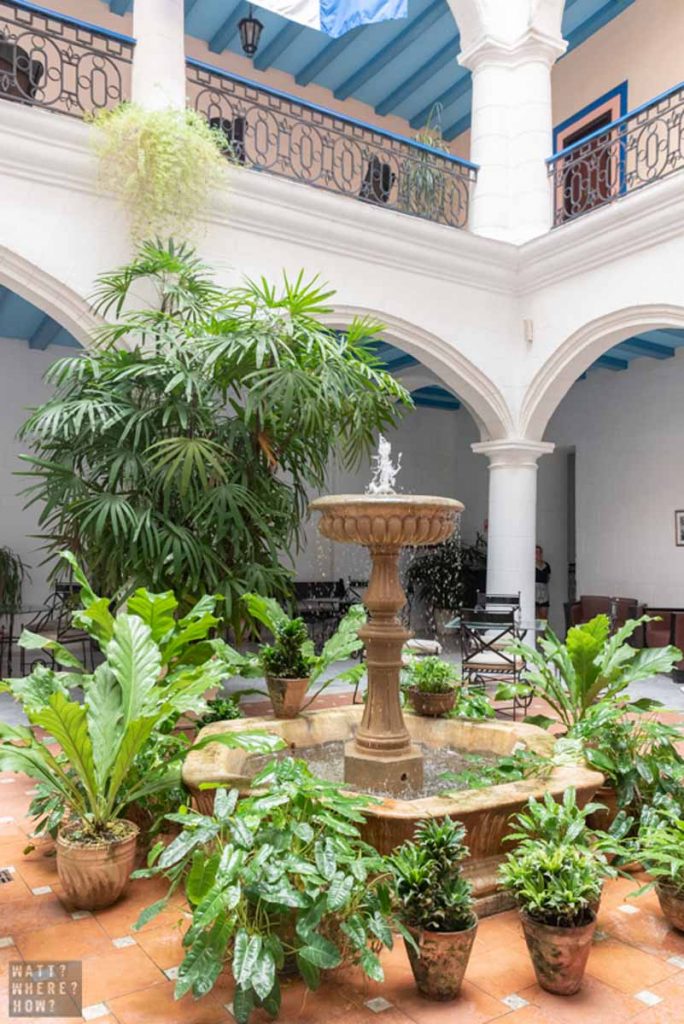
Muddling fresh mint leaves, dropping in raw sugar and pouring in a generous serve of Havana Club rum, our mojitos bubble to life. There’s no ice to offset the heat and the drinks are actually quite gritty, not like the ones we’ve tasted in bars across the globe, though the addition of a tiny bug does nothing to change our first impressions.

Hustled along by our guide, the next stop is a cigar shop, where over-eager members of the party insist on bantering and umming and ahhing for way longer than has been allocated. In the interim period, it’s an opportunity to step outside, and people watch. Next to a drink cart surrounded by local men is a refuse pile for coconut husks. With reckless abandon and a heavy machete, they slash open coconuts or pineapples and create delicious beverages for tourists.
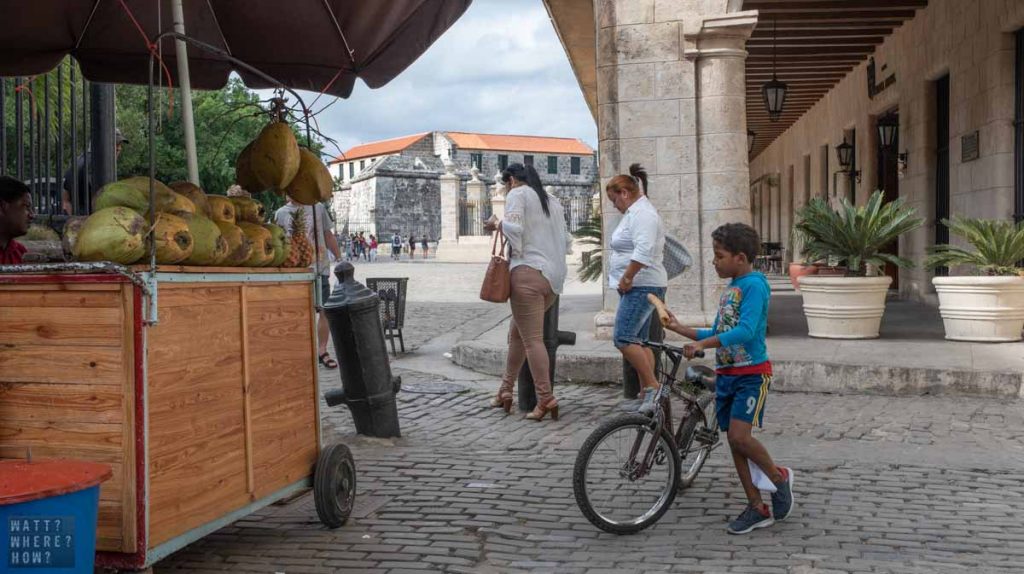
Watching on, three locals are getting haircuts sitting out in the open on kitchen chairs as the women behind work their tresses. An adjoining courtyard houses an open bookstore of communist texts, and while its attendant keen to coax us inside, we ignore his hustle as we admire a gorgeous candy-apple-red Cadillac that is parked beside its gates.

Castillo de la Real Fuerza
Like a medieval keep, the Castillo watches over the Canal de Entrada leading into the Port. Surrounded by a saltwater moat, this 16th-century fortress was built by slaves and prisoners as a defence against pirates. A bronze effigy of a woman, La Giraldilla, sits atop the watchtower and is considered one of the symbols of Cuba (it’s on the Havana Club label).
Walking west along O’Reilly, we navigate side streets learning about the architecture and history of Havana, which was once a booming destination on the trade route from the Caribbean to Europe. Restored to its former glory, Calle Mercaderes (Merchant’s Street), is home to many small museums, its smaller alleys filled with modern street vendors selling art.



Catedral de San Cristóbal
Somehow, in the maze of streets, we wind our way back east to visit Catedral de San Cristóbal. Said to be one of the oldest churches in Havana, the interior of this cathedral is immaculately decorated, with its murals playing on the Caribbean blue and gilded with glistening gold.
Its beauty is equaled in the adjoining Plaza, with buildings blue accents and centuries old cast iron decorative fixtures. Designed by Francesco Borromini, the Jesuit cathedral housed the remains of Christopher Columbus from 1795 to 1898, when they were taken to Seville where they remain interred today at the Seville Cathedral.

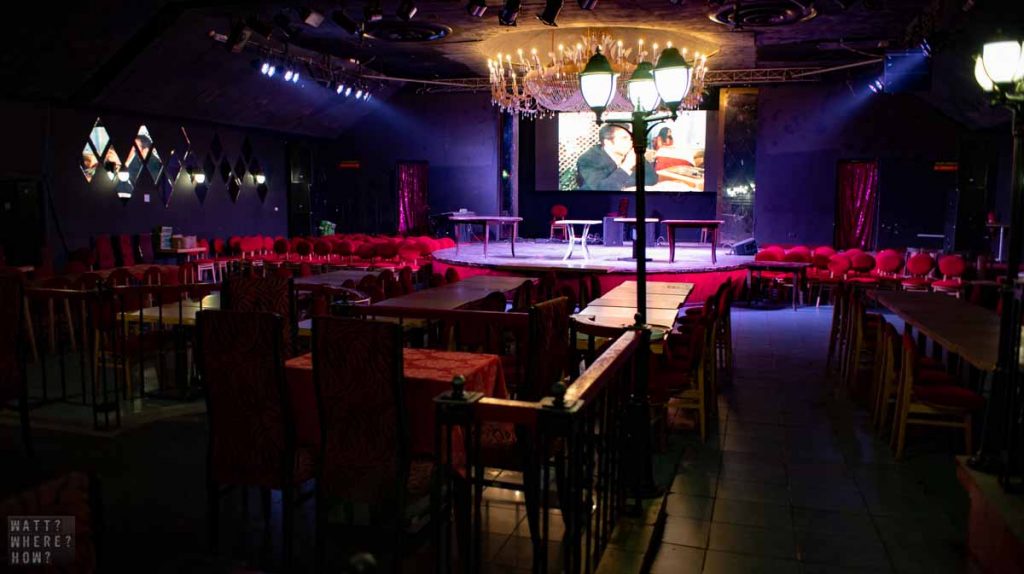
Salon Rojo
Next stop on our walking tour logically sees us board a bus. The destination is Salon Rojo—a famed cabaret nightclub at what was the base of the Hotel Capri, one of the original venues of the gambling, rum drinking and cigar-chomping glory days of Havana, pre the rise of Castro. At night it attracts some of Cuba’s best performers, with a dance floor that you can imagine would be alive with large than life salsa dancers or perhaps a torchlight singer.

By day, it has that gritty, nastiness of a bar that has served too many drinks far too late into the evening. There’s a stench of bleach that doesn’t play nicely with the aromas of rum and cigar smoke. Still, we only have limited shore time, and this is our best opportunity to learn about the process of tobacco growing, drying, rolling, and the art of cigar smoking.

Seated in cabaret booths that have seen better days, we are indoctrinated into a world of Cuban flavors. We start with a serve of super-strong local coffee. It’s little more than a shot, but it has the potency to keep you going all night – which is something that Cubans seem to enjoy (who doesn’t though?). When in Rome (and Havana), it would be offensive not to try the real deal – Havana Club rum. Thankfully the server has a rubbery arm that delivers a more than generous pour. Sipping rum, we learn how to guillotine the end of the cigar and how to light it, so the vibrant orange glow burns as you draw in a lung full of smoke.

Trying our best not to choke on the cigar and to savor the nuances, it’s not long before we’re feeling a little lightheaded and mildly festive. Although there’s no music at this time and the place feels seedier than a Larry Flint club, we’re already tapping our toes and getting into the rhythm of the city.

Plaza de la Revolucion
The unofficial next stop on this people-to-people exchange is supposed to be a cigar factory, but being a public holiday, our venue has closed early to allow the workers to celebrate with their families. This gives us plenty of time to detour (again on the bus – so much for walking tour!) to Plaza de la Revolucion – Revolution Square. The site is famous for the communist rallies held since the 1959 revolution, and it is where you will find the seat of the government at the Palace of the Revolution. Steel murals of Che Guevara and Camilo Cienfuegos dominate the Plaza, watched over by the José Martí monument, which has an elevator inside for views of the city.

Today the Plaza is empty. We’re not sure whether this is due to the time of day, or perhaps, a memory and struggle that is best left to other less celebratory occasions, but we take this moment in, almost alone, where history has almost stood still. Across from the Plaza, a car park is buzzing with activities. It’s almost like a classic car rally is taking place. Car lovers will love the treasure trove of well cared for gems from the 1950s. These serve as the city’s taxis, and for a small fee, drivers are all too willing to let you jump in for a photo – or for a very affordable rate, they will drive you around to see the aging, yet exotic Old Havana.


At this time, light is fading fast, so we head past the more degraded part of town and back to the artisan market. We are fascinated with this area, but the guide is either unwilling or unable to share any information with us. The people here are struggling financially, but it doesn’t dampen their lust for life. Walls are crumbling; buildings, condemned. And yet, there are signs of life, love, and community. Locals queue at non-descript windows to pick up essentials, while others share a beer out on the stoop.
We capture a very brief moment of neighborhood children playing soccer in the streets, with elders sitting on the rooftop having a cigar and taking in the twilight scene. A young man in a white singlet and jeans struggles with the weight of the freshly slaughtered goat, hogtied and strung across his shoulders to make it easier to get it home for dinner.

We pass the old American Embassy building that sits abandoned near the water’s edge, the relationships more frayed than ever after rumoured sonic boom attacks on officials. We follow the oceanfront road at El Malecon where waves crash so heavily against the barriers they frequently spill over onto the street—the furthest lane that most motorists avoid – yet there’s still a group of foolhardy fishermen ready to get a drenching every few sets of waves. We pass the Anti-Imperialist Park, where a sea of steel flagpoles comes out of the ground like vicious spikes. It’s an eerie site, left to rust in the salty sea breeze over past decades.

Let’s Ride!
Finally gaining some time out to explore on our own, we find the first 1950s Studebaker that suits our aesthetics (hey, if you’re going to be in Havana for 24 hours, you have to!) and we direct the driver to the one place we don’t want to miss. We pull up in front of a corner bar in a small plaza.

El Floridita
Few bars have played such an intrinsic part in cocktail culture as El Floridita. It’s synonymous with its most famed patron, author and the manliest man ever, Ernest Hemingway and his drink of choice that was invented here – the daiquiri. Entering through the double doors, there’s no mistake that we’re in the wrong place. There’s a seven-foot daiquiri glass dominating what would otherwise be a classy, yet casual watering hole.
A live band is performing a crowd-pleasing set of Caribbean favourites, while the bar is three deep with thirsty patrons. Watching on with a bad case of resting bitch face is a bronze statue of the great man himself, perched on the very seat he almost burned himself into he was such a permanent fixture. There are no tacky frozen daiquiri machines to be seen. This place is legit! Beyond the main bar is a restaurant dining room that stands frozen in time. You can easily imagine Hemingway stepping in here for dinner (or at least to nip out the back to the restrooms).

While inside, we’re two daiquiris in and the band has already packed up their gear, outside the party is just starting. Another live band is performing out on the street with a crooner singing heart-felt Cuban classics to an adoring crowd. Backed by a full brass section and surrounded by locals, we feel welcomed and part of it all. It’s a strange dynamic here, where intellectualism and wealth gets penalized for the greater good and while healthcare is affordable, doctors aren’t in the top five or even one percenters of income earners. Still, there must be money here, because just adjacent to the nation’s Capitol stands the Gran Hotel Manzana Kapinski.

Gran Hotel Manzana Kapinski, Parque Central, Havana
A luxurious five-star hotel and shopping mall, this is not the Havana we ever expected to find. The Gran Hotel Manzana Kapinski brings together elegant colonial accommodations, a rooftop pool and bar and some of the world’s most expensive luxe brands in its retail arcade. You certainly don’t go to Cuba expecting to be able to shop at Mango, let alone Versace, Armani or Mont Blanc. Only two years young, the new hotel located in the old Manzana de Gomez building on the Parque Central was a stylish retail center before the 1959 revolution. Today it’s overseen by Gaviota, the Cuban government-owned hotel company that is watched over by the country’s military administration.

A line of classic cars idle out front of the hotel and we’re more than a little keen to take a ride in a gorgeously renovated yellow convertible for a second drive through new parts of the city – Cuban style. Each vehicle is kept in pristine condition, as opposed to the crumbling buildings they drive past daily. These cars are synonymous with Havana but there are just as many secondhand Ladas and other soviet era cars driving the streets. Newer models are a thing here, but they either cost as much as a house or are used by government agencies for a few years before being available for purchase by locals.

As dusk descends into the night, we wiz through the old city, alive with families congregating on stoops. People line up for street food or to purchase groceries from behind barred windows, while a group of men sip on tall cans of Heineken.

The Tropicana Cabaret Nightclub, Havana
With time slipping away, we engage in another people-to-people educational experience – a night at Havana’s original cabaret night club, The Tropicana. The inspiration for modern-day Las Vegas entertainment, we learn that the club attracts the best dancers in the world, and while it is wildly popular with tourists, it is very much over what locals can afford. Tropicana is miles from the center of Havana in a leafy estate complete with a grand entrance, fountains and Grecian statues. Dating back to December 30, 1939, the converted mansion has welcomed playboys and gangsters to its garden amphitheater and what was then also a casino.

Arriving, we are escorted to the doorman, whom we promptly pay an additional fee to film and photograph the performance. On entry, women are presented with a rose, and men, a cigar. We are led to the tables where, included in the prize, a full bottle of rum and mixer is shared between tables of four, along with a glass of champagne upon arrival. Mafia leader, “Lucky” Luciano was a regular and we are ushered to the same table where the hit man used to sit.
What follows is 90 minutes of the most amazing dancing, acrobatics, singing and entertainment we have ever seen. Water cascades over greenery, walls of hedges offer elevated spaces where dancers appear, and an elevated secondary stage houses a full swing band. It’s a 180-degree experience (360 if you include the rear mirrored wall) that incorporates acrobatics, feats of endurance, gorgeous leggy dancers, opulent, over-the-top costumes and the country’s most talented performers (The Tropicana also serves as a school to Cuba’s most promising musicians and dancers.)
Believe us when we say (a) Yes, it is expensive, (b) Yes, it is touristy but (c) It is worth every cent. You WANT to do this.
It’s a wrap
Just after the stroke of midnight, we bid farewell to Havana back at the Convento de San Francisco de Asís where our day started. Others continue into the night to party. Local drinking spots are open LATE and by late, we mean, early morning, so you can always try something low key afterward.

Looking back from the harbourfront, where treasure-laden galleons once docked, to a city that has seen its development paused, if not frozen in time by sanctions and socialism we reflect on what we’ve seen. Twenty-four hours is not enough time to grasp the good or bad of the situation, and each person we speak to as we head back onto the ship has had a different experience. We hope that in the future we have another chance to explore this beautiful city, but for now, we hope we have at least given you a starting point to plan one day in Havana.

If this has given you a taste of what there is to see in Havana, you may like to discover other parts of the Caribbean including Barbados, the Bahamas, and Puerto Rico.































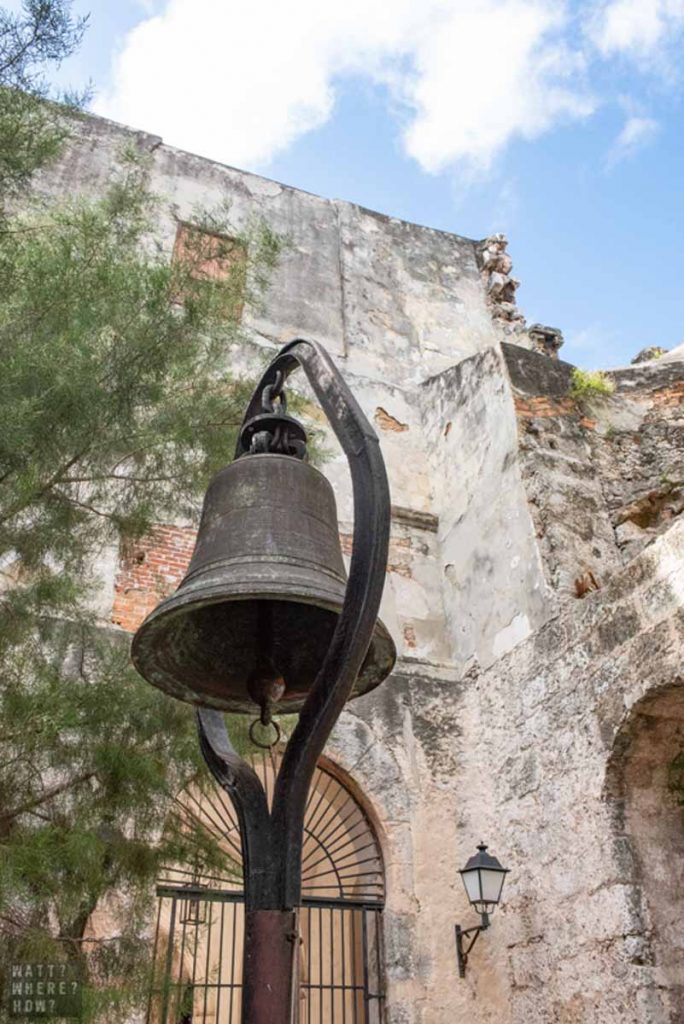






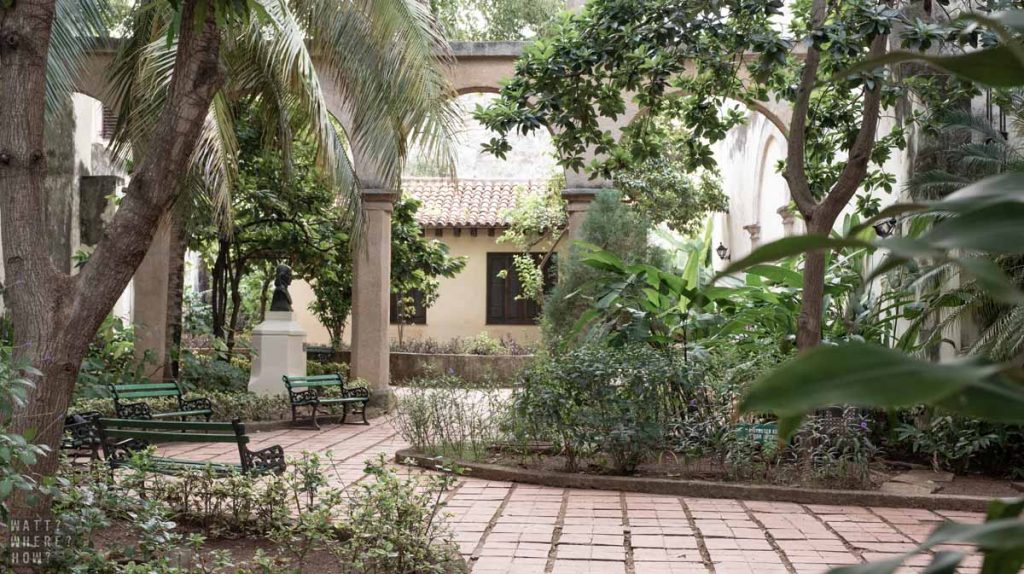











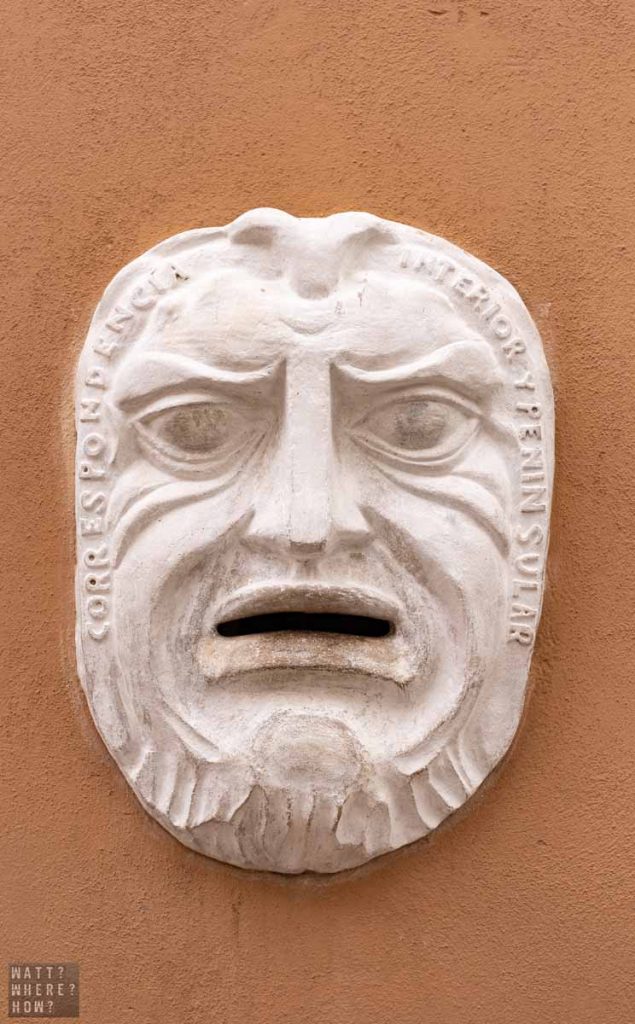
















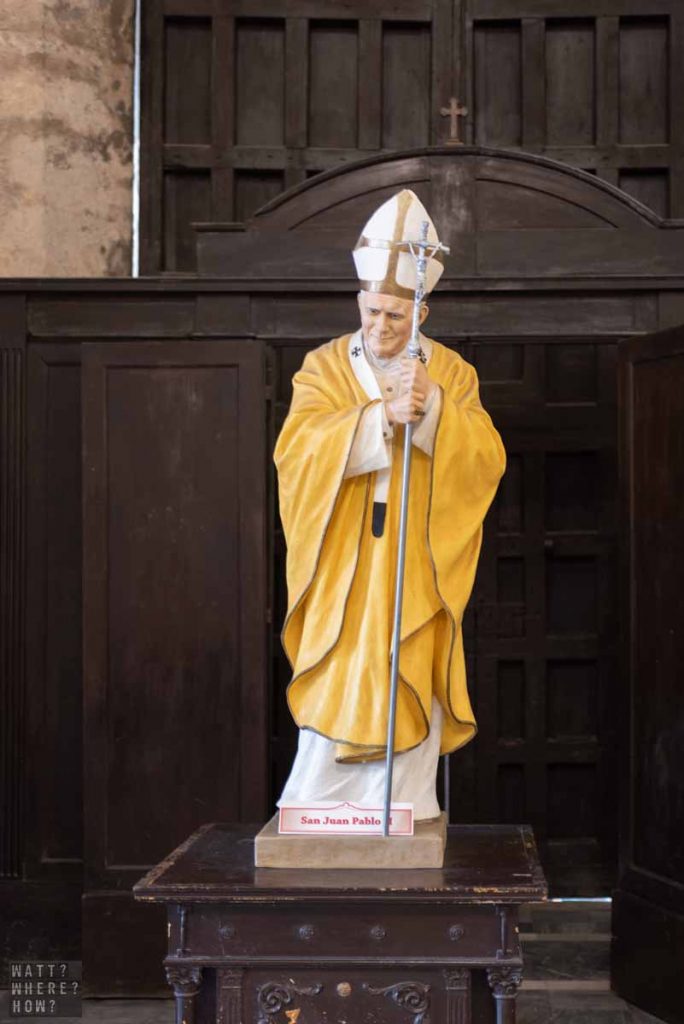



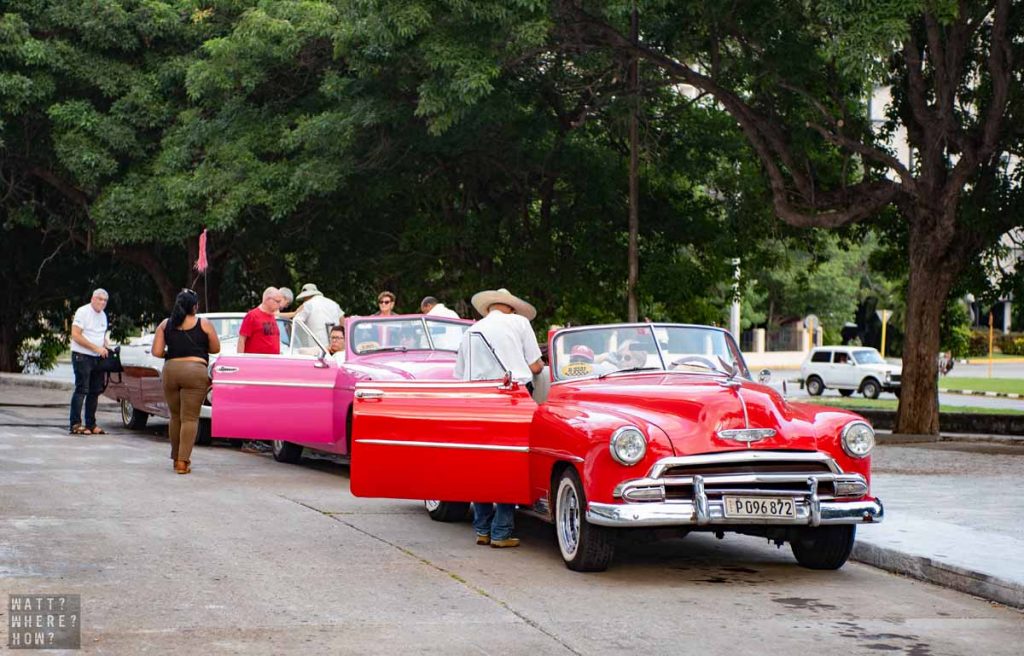















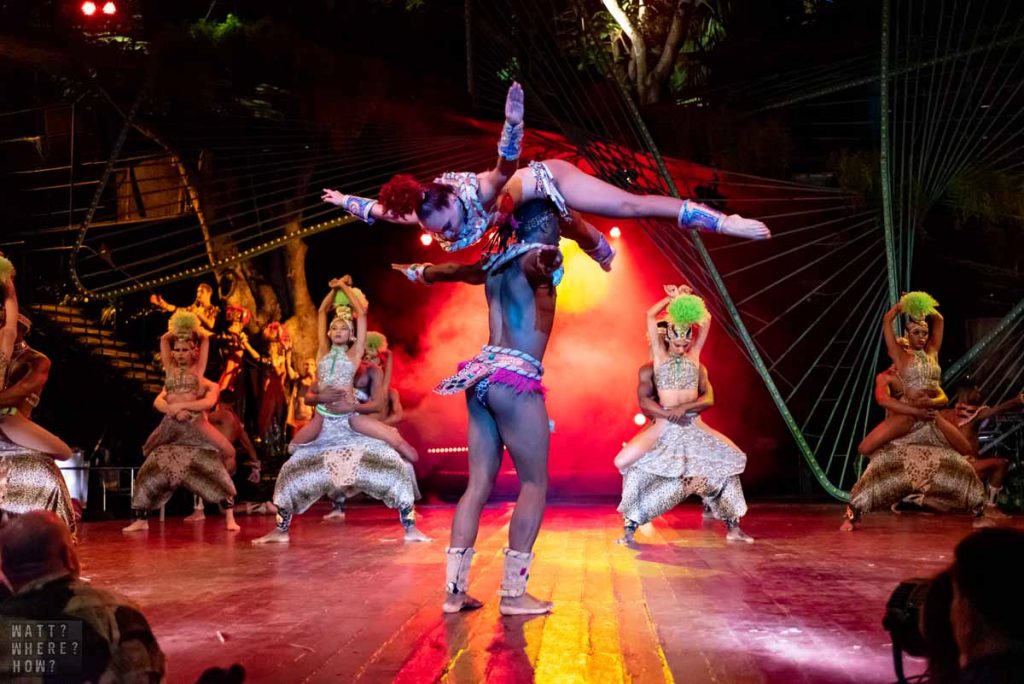







What an absolutely jam packed day you had! You crammed in so much and learnt so much history along the way. What a fascinating place with a vibe like no other.
Definitely one for my travel bucketlist. Thanks for sharing such a detailed account of your experience.
Also, love the pictures – so authentic!
Thank you! Not long after this, Trump shut it down again mostly, so seeing it so intensely was worth it. If you get a chance, we highly recommend it.
Shame you had such little time in Havana but certainly seems like you made the most of it, you packed a lot in! It looks like a wonderful place. Hopefully a change of president will see Americans afforded the luxury of visiting in an easier way in the future.
We’re hoping so too.
Absolutely love the photos, Havana is such a photogenic city! Also appreciated that you peppered the collection with a few cats and dogs 😉 You really made the most of your time there, though I felt exhausted on your behalf at the end of it. I’m adding those gorgeous tiles to my shopping list for if (when!) we finally make it there.
Ha ha good reason to be exhausted Lyn. There were so many stray animals, but they were all so friendly – just had to resist petting them.
Cuba has been a dream destination of our for a long time. Hopefully, it will open up again so we can have an opportunity to experience it. Excellent post that made us feel we were there too.
I imagine it will soon enough given the regime change here.
This is hands down my favourite article of yours. Such an in depth walk through Havana, and you documented everything in photos. Down to a cat doing it’s business even. Now you really brought Cuba right back up the list again. Great job.
What…??? How did you fit this all in one day! So much to learn and see in Havana! I’m hoping the status will change for Americans again soon. Would love to visit!
When you only get one day and you’ve always wanted to go there, you don’t stop ha ha
Havana looks so incredible, I’ve wanted to visit Central America for ages but this is even more tempting! There’s so much unbelievable history, and the cars are brilliantly nostalgic of a lost era I wasn’t even part of. Travelling from the UK, there might be fewer regulations too. Thanks for sharing this wonderful experience!
Yes, once the border restrictions are down for COVID it will be worth a week there for sure.
24-hours might not be enough but who of us feels like we always had enough time to visit a location. Great details and an amazing visit, thanks for posting
Exactly! If you ever get a chance there, you’d love it for the music.
Ahhh Havana. It’s such a fascinating city. I’ve been 3 or 4 times and there is still so much to discover. You guys managed quite a bit in one day!
It was ambitious. As a Canadian, you have free reign, but we’re more cautious based on our residency.
Wow! What an incredible day you two had…. All the pictures were great – I feel that I spent the day in Havana with you
Wow, that’s a busy day! This is a really informative post and the photos really capture the Havana I remember visiting. It’s a fascinating city – I’d love to return one day.
Sleep when you’re dead and all that – the rum probably helped ha ha
24 hours is definitely enough in Cuba. But with limited time, might as well have a blast. A classic car ride, a cultural walk and Cuban cocktails will be my itinerary. Thanks for shari g your travels and photos!
I’d love a week there to get a car and drive around the island. One day…
This is the most in depth post I’ve read about Havana. I was wondering what a tour might be like. It’s not as rigid as I thought it would be. It’s nice that you had some free time. Your pictures are gorgeous!
We were worried that we’d have to stay with the group to be eligible for the visa at the time, but we were able to go off and explore a bit. A day isn’t enough though.
Great article! We always wanted to rock up to a place with a cruise ship. That feels so luxurious. To have only one day in Havanna must have been such a rush! We would have opted for a guide too. I bet it was great to get to drive around in a 1950s Studebaker and to finish your day with the Tropicana show. It seems like you made the very best of your time there!
Looks amazing never heard to much on Cuba looks like so much history. And the quirkiness of finding a random Cathedral and how stunning is it.
Not forgetting the cars you could cruise around in them like a lord all day long.
Thanks for sharing the sites of Havana
Havana looks absolutely lovely! So much to see and do, lots of history and beautiful colors 😍
If you ever get the chance to visit, it’s like stepping back in time. Amazing.